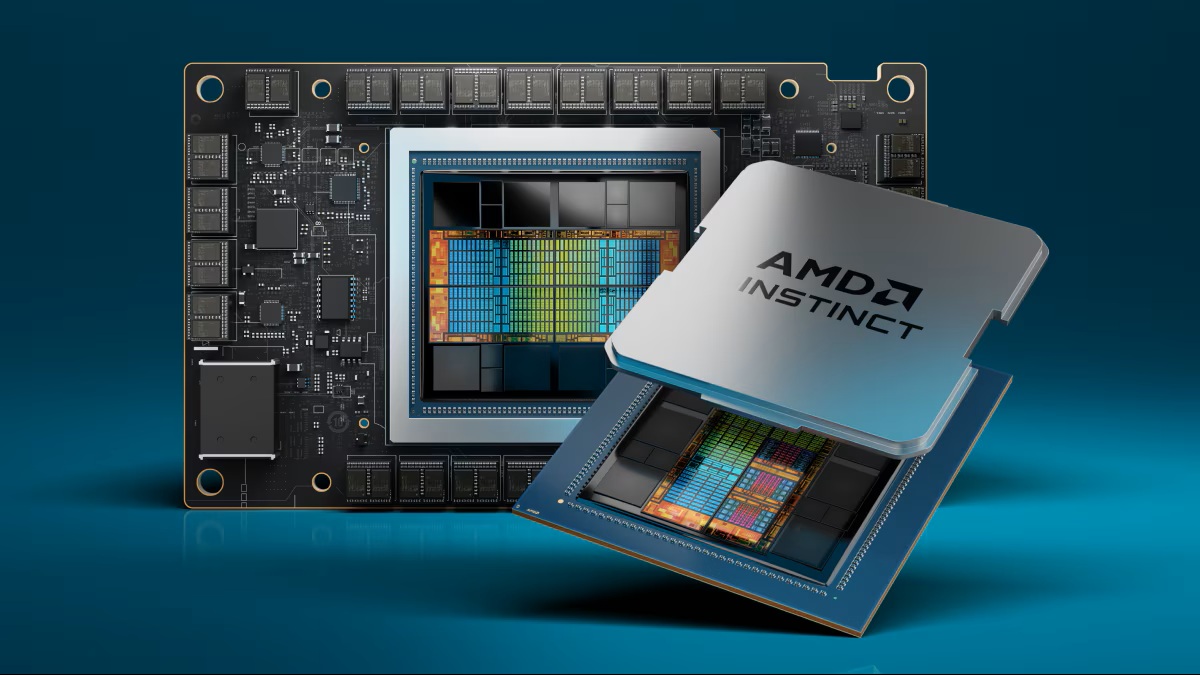TMTPOST -- Advanced Micro Devices, Inc. stock on Monday notched its best day in a year after the artificial intelligence (AI) chip maker secured a deal worth tens of billions of dollars with OpenAI.

Credit:AMD
AMD shares soared as much as 37.7% and finished 23.7% higher at $203.71, setting their highest close since March 2024. As the stock jump, AMD』s market capitalization gained $63.36 billion, its largest one-day jump on record, to end Monday at $330.6 billion, its second-highest market value ever, according to Dow Jones Market data. The PHLX Semiconductor Index (SOX), a Philadelphia Stock Exchange capitalization-weighted index composed of the 30 largest U.S. companies primarily involved in the design, distribution, manufacture, and sale of semiconductors, closed nearly 3% higher, while AMD』s rival Nvidia Corp. Shares dropped 1.1%.
AMD and OpenAI reached a 6 gigawatt (GW) agreement to power OpenAI』s next-generation AI infrastructure across multiple generations of AMD Instinct graphics processing units (GPUs). The first 1 gigawatt deployment of AMD Instinct MI450 GPUs is set to begin in the second half of 2026, according to an OpenAI』s statement on Monday.
Under the agreement, OpenAI will work with AMD as a core strategic compute partner to drive large-scale deployments of AMD technology starting with the AMD Instinct MI450 series and rack-scale AI solutions, and extending to future generations. By sharing technical expertise to optimize their product roadmaps, AMD and OpenAI are deepening their multi-generational hardware and software collaboration that began with the MI300X and continued with the MI350X series.
OpenAI said the partnership creates a true win-win for both companies, enabling very large-scale AI deployments and advancing the entire ecosystem.
As part of the agreement, AMD has issued OpenAI a warrant for up to 160 million shares of AMD common stock at $0.01 per share, which was structured to vest as specific milestones are achieved. The first tranche vests with the initial 1 GW deployment, with additional tranches vesting as purchases scale up to 6 GWs. Vesting is further tied to AMD achieving certain share-price targets and to OpenAI achieving the technical and commercial milestones required to enable AMD deployments at scale.
If OpenAI exercises the full warrant, it could take over around 10% ownership of AMD, based on the current number of outstanding shares.
「Building the future of AI requires deep collaboration across every layer of the stack,」 said Greg Brockman, co-founder and President of OpenAI. 「Working alongside AMD will allow us to scale to deliver AI tools that benefit people everywhere.」
Brockman told CNBC that the deal with AMD "is so core to our mission if we really want to be able to scale to reach all of humanity." He said OpenAI's lack of computing power is holding the company back from launching more features and products that can generate more revenue.
「AMD's leadership in high-performance chips will enable us to accelerate progress and bring the benefits of advanced AI to everyone faster," said OpenAI CEO Sam Altman.
「We are thrilled to partner with OpenAI to deliver AI compute at massive scale,」 said AMD CEO Lisa Su. 「This partnership brings the best of AMD and OpenAI together to create a true win-win enabling the world』s most ambitious AI buildout and advancing the entire AI ecosystem.」 AMD is expected to see tens of billions of dollars in revenue through the partnership,Su said in a statement.
Su in a CNBC program saw a 10-year growth path for AI, which requires a lot of computing."You need partnerships like this that really bring the ecosystem together to ensure that ... we can really get the best technologies ... out there," Su said.
While OpenAI last month announced it would receive a $100 billion investment from Nvidia, Su said she wants OpenAI to feel aligned with AMD's success as well.
"The more OpenAI deploys, the more revenue we get, and they get to share in part of the upside," Su said. "The important piece of it is it is all performance-based in the sense that the upside is aligned when we get more revenue, when there are more deployments."



























